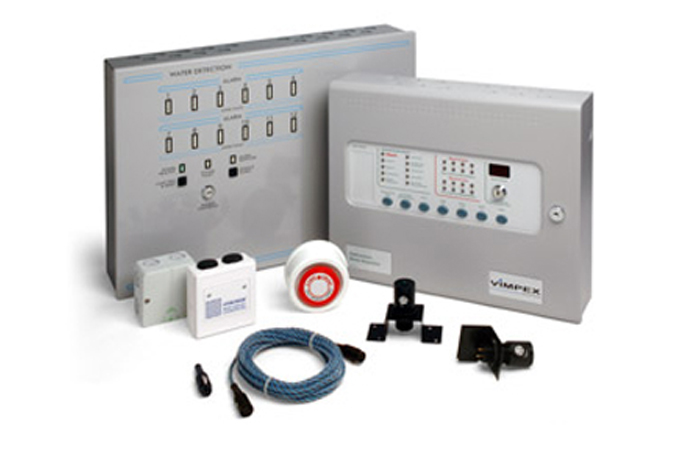water leak detection system
A water detector is an electronic device that is designed to detect the presence of water and provide an alert in time to allow the prevention of water damage. A common design is a small cable or device that lies flat on a floor and relies on the electrical conductivity of water to decrease the resistance across two contacts. The device then sounds an audible alarm together with providing onward signalling in the presence of enough water to bridge the contacts.
Water leak detection is an expression more commonly used for larger, integrated systems installed in modern buildings or those containing valuable artifacts, materials or other critical assets where early notification of a potentially damaging leak would be beneficial. In particular, water leak detection has become a necessity in data centers, trading floors, banks, archives and other mission-critical infrastructure.
The water leak detection industry is small and specialized with only a few manufacturers operating worldwide. The original application was in the void created by "computer room" floors in the days of large main-frame computer systems. These use a modular, raised floor based around a structural "floor tile" usually 600 mm square and supported at the corners by pedestals.
A leak occurring within a floor void would therefore go unnoticed until the hydrostatic head of pressure meant that the water found its way through to floors below where its dripping through the ceiling would be noted or, and more disconcerting, the water would penetrate the joints and connectors of the power or network cabling and cause system failure from short circuit.
Water leak detection systems can be integrated with Building Management Systems using multiple protocols such as Modbus. Using SNMP protocols leak detection systems can inform IT staff in charge of monitoring data center and server rooms. It is not only critical to detect a water leakage but also adequately and promptly alert; if not taking automated corrective actions

